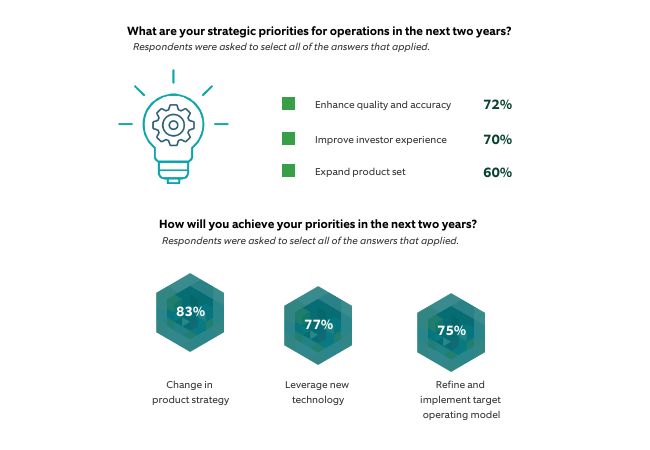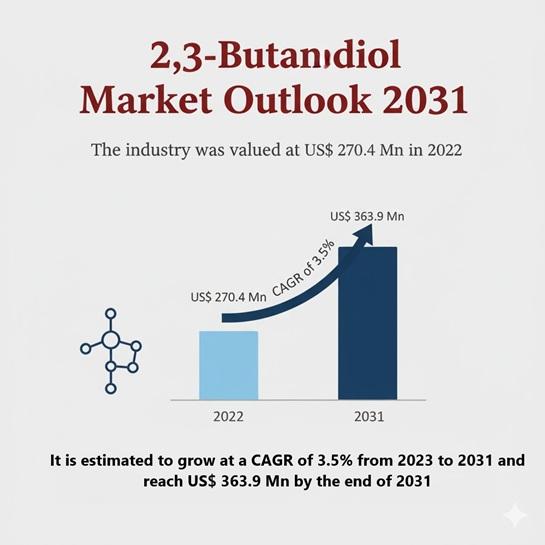Innovation Management Market: Fostering Creativity, Driving Strategic Growth, and Enabling Competitive Advantage – FMIBlog

Report on the Global Innovation Management Market and its Alignment with Sustainable Development Goals (SDGs)
1.0 Market Overview and Projections
The global Innovation Management Market is projected to experience significant growth, with an estimated valuation of USD 1.5 billion in 2025, expanding to USD 4.1 billion by 2035. This reflects a compound annual growth rate (CAGR) of 10.7%. This expansion is fundamentally linked to the increasing global imperative to achieve the United Nations Sustainable Development Goals (SDGs), as organizations leverage structured innovation to address complex environmental, social, and economic challenges.
Innovation management platforms are critical tools for advancing several SDGs by enabling systematic approaches to developing sustainable solutions. The market’s growth is indicative of a broader shift where businesses and public institutions are embedding sustainability into their core strategic objectives.
2.0 Strategic Importance for Sustainable Development
The adoption of innovation management systems is crucial for organizations aiming to contribute meaningfully to the 2030 Agenda for Sustainable Development. These platforms provide the necessary infrastructure to manage the entire innovation lifecycle, from ideation to implementation, ensuring that new initiatives are aligned with sustainability targets.
- SDG 9 (Industry, Innovation, and Infrastructure): This is the primary goal supported by the market. Innovation management systems directly foster innovation, support the development of resilient infrastructure, and promote inclusive and sustainable industrialization.
- SDG 12 (Responsible Consumption and Production): Companies use these platforms to design circular economy models, reduce waste, and develop products with lower environmental footprints.
- SDG 8 (Decent Work and Economic Growth): By fostering a culture of creativity and empowering employees, these systems contribute to sustainable economic growth and the creation of high-value jobs.
3.0 Key Market Drivers Aligned with Global Goals
The market’s momentum is driven by several factors that are increasingly viewed through the lens of sustainable development.
- Digital Transformation for Sustainability: The integration of cloud platforms, AI, and advanced analytics enhances an organization’s ability to identify opportunities for sustainable innovation, optimize resource use, and forecast environmental impacts, directly supporting SDG 9 and SDG 12.
- Pressure for Sustainable Differentiation: As consumers and regulators demand greater environmental and social responsibility, companies are driven to innovate. This pressure accelerates the development of solutions that address climate change (SDG 13) and promote clean energy (SDG 7).
- Rise of Open and Collaborative Innovation: The need to solve complex global challenges encourages cross-sector collaboration. Open innovation models align with SDG 17 (Partnerships for the Goals), bringing together diverse stakeholders to co-create solutions.
4.0 Emerging Trends in Sustainability-Focused Innovation
Several key trends are shaping the market, with a strong emphasis on achieving sustainability outcomes.
- Sustainability as a Core Innovation Pillar: A significant trend is the explicit focus on innovations that generate positive environmental and social outcomes. This includes developing green technologies, creating inclusive products, and re-engineering processes for resource efficiency (SDG 9, SDG 12).
- AI-Driven Sustainability Insights: Artificial intelligence is being used to analyze complex data sets to predict the environmental impact of new products, assess the feasibility of green technologies, and accelerate research and development for climate solutions (SDG 9, SDG 13).
- Collaborative Ecosystems for Global Goals: The market is shifting towards building innovation ecosystems that include suppliers, customers, research institutions, and NGOs. This collaborative approach is essential for tackling systemic issues and advancing SDG 17 (Partnerships for the Goals).
5.0 Regional Analysis and Contribution to the SDGs
5.1 North America and Europe
These regions lead in market adoption, driven by strong regulatory frameworks supporting sustainability and significant R&D investments in green technology. Corporate and public sector collaboration is a key factor, advancing innovation in areas central to SDG 9 and SDG 12.
5.2 Asia-Pacific
The Asia-Pacific region is experiencing rapid growth, using innovation management systems to enhance industrial competitiveness and address pressing local challenges. This contributes to economic growth (SDG 8) and the development of sustainable infrastructure and industries (SDG 9).
6.0 Competitive Landscape and Future Outlook
The competitive landscape features technology providers and consulting firms offering solutions that enable organizations to integrate sustainability into their innovation pipelines. Future strategies will focus on enhancing platforms with AI, automation, and advanced analytics to support continuous and agile innovation cycles.
The evolution of the Innovation Management Market is intrinsically tied to the global pursuit of the Sustainable Development Goals. Future platforms will play a pivotal role in helping organizations translate creative ideas into tangible solutions that foster a sustainable, equitable, and prosperous global economy.
SDGs Addressed in the Article
-
SDG 9: Industry, Innovation and Infrastructure
The article is fundamentally about the innovation management market, which directly supports building resilient infrastructure, promoting inclusive and sustainable industrialization, and fostering innovation. It discusses how organizations use innovation platforms to “streamline development pipelines,” “accelerate industrial competitiveness,” and manage the “full lifecycle of innovation.”
-
SDG 8: Decent Work and Economic Growth
The article connects innovation management to economic performance. It highlights that these practices help organizations “remain competitive in a rapidly evolving business environment” and “translate creative ideas into tangible competitive advantages in the global economy.” This focus on competitiveness, efficiency, and market growth is central to achieving sustained economic growth.
-
SDG 12: Responsible Consumption and Production
The article explicitly mentions the trend of “Sustainability-focused innovation,” where companies “aim to align creativity with environmental and social responsibility goals.” This directly relates to promoting sustainable practices within industries.
-
SDG 17: Partnerships for the Goals
The text emphasizes the importance of collaboration. It points to a “strong shift toward collaborative innovation ecosystems that include suppliers, partners, customers, and even competitors.” It also notes that “Partnerships, mergers, and acquisitions are common,” and highlights “strong collaboration between industry and academia,” which are all forms of partnerships to achieve common goals.
Identified SDG Targets
-
SDG 9: Industry, Innovation and Infrastructure
-
Target 9.5: Enhance scientific research, upgrade the technological capabilities of industrial sectors in all countries… encouraging innovation and substantially increasing… public and private research and development spending.
The article supports this target by describing how the innovation management market is driven by “R&D investments” and the need for “systematic innovation.” The entire market is focused on providing tools and strategies to upgrade technological capabilities and foster innovation within enterprises.
-
Target 9.b: Support domestic technology development, research and innovation in developing countries.
This target is addressed in the “Regional Insights” section, which states that “Emerging economies are leveraging innovation management systems to accelerate industrial competitiveness and address local market challenges.” This shows a direct application of innovation platforms to support technology and innovation in developing regions.
-
Target 9.5: Enhance scientific research, upgrade the technological capabilities of industrial sectors in all countries… encouraging innovation and substantially increasing… public and private research and development spending.
-
SDG 8: Decent Work and Economic Growth
-
Target 8.2: Achieve higher levels of economic productivity through diversification, technological upgrading and innovation.
The article’s core subject is how innovation management helps companies “improve efficiency,” “reduce time-to-market,” and “deliver measurable value.” These outcomes are direct contributors to higher economic productivity achieved through technological upgrading and innovation.
-
Target 8.2: Achieve higher levels of economic productivity through diversification, technological upgrading and innovation.
-
SDG 12: Responsible Consumption and Production
-
Target 12.a: Support developing countries to strengthen their scientific and technological capacity to move towards more sustainable patterns of consumption and production.
The article points to this target by identifying “Sustainability-focused innovation” as a critical trend and noting that Europe is driven by “regulatory support for sustainable innovation.” Combined with the insight that emerging economies are adopting these systems, it implies a move towards strengthening technological capacity for sustainability.
-
Target 12.a: Support developing countries to strengthen their scientific and technological capacity to move towards more sustainable patterns of consumption and production.
-
SDG 17: Partnerships for the Goals
-
Target 17.17: Encourage and promote effective public, public-private and civil society partnerships.
This target is reflected in the article’s description of market trends and regional dynamics. It mentions the rise of “collaborative innovation ecosystems” and specifically notes that in Europe, there is “strong collaboration between industry and academia,” a key example of a public-private partnership.
-
Target 17.17: Encourage and promote effective public, public-private and civil society partnerships.
Indicators for Measuring Progress
-
For Target 9.5 (Enhance research and innovation):
- Indicator (Implied): Research and development expenditure. The article identifies “a strong emphasis on R&D investments” as a key factor in market leadership, implying that the level of R&D spending is a measurable indicator of innovation activity.
- Indicator (Proxy): Market value and growth of the innovation management market. The article provides specific figures: “valued at USD 1.5 billion in 2025 and is projected to reach USD 4.1 billion by 2035, registering a compound annual growth rate (CAGR) of 10.7%.” This growth serves as a proxy indicator for the increasing adoption of and investment in innovation capabilities.
-
For Target 8.2 (Achieve higher economic productivity):
- Indicator (Implied): Rate of adoption of innovation management platforms. The overall market growth (CAGR of 10.7%) indicates an increasing adoption of technologies designed to boost productivity and efficiency.
- Indicator (Qualitative): Reduction in time-to-market. The article mentions that “AI-driven insight tools are enabling businesses to… reduce time-to-market,” which is a direct measure of productivity and efficiency gains.
-
For Target 12.a (Strengthen capacity for sustainability):
- Indicator (Implied): Adoption of sustainability-focused innovation practices. The article identifies “Sustainability-focused innovation” as an “emerging as a critical trend,” suggesting that the rate of its adoption by companies is a key indicator of progress.
-
For Target 17.17 (Promote partnerships):
- Indicator (Implied): Number and scope of collaborative ecosystems and partnerships. The text points to a “strong shift toward collaborative innovation ecosystems” and notes that “Partnerships, mergers, and acquisitions are common.” The frequency and scale of these collaborations serve as an indicator of partnership activity.
Summary Table of SDGs, Targets, and Indicators
| SDGs | Targets | Indicators Identified in the Article |
|---|---|---|
| SDG 9: Industry, Innovation and Infrastructure | 9.5: Enhance scientific research, upgrade technological capabilities, and encourage innovation. |
|
| 9.b: Support domestic technology development, research and innovation in developing countries. |
|
|
| SDG 8: Decent Work and Economic Growth | 8.2: Achieve higher levels of economic productivity through technological upgrading and innovation. |
|
| SDG 12: Responsible Consumption and Production | 12.a: Support developing countries to strengthen their scientific and technological capacity for sustainability. |
|
| SDG 17: Partnerships for the Goals | 17.17: Encourage and promote effective public, public-private and civil society partnerships. |
|
Source: fmiblog.com

What is Your Reaction?
 Like
0
Like
0
 Dislike
0
Dislike
0
 Love
0
Love
0
 Funny
0
Funny
0
 Angry
0
Angry
0
 Sad
0
Sad
0
 Wow
0
Wow
0














































































